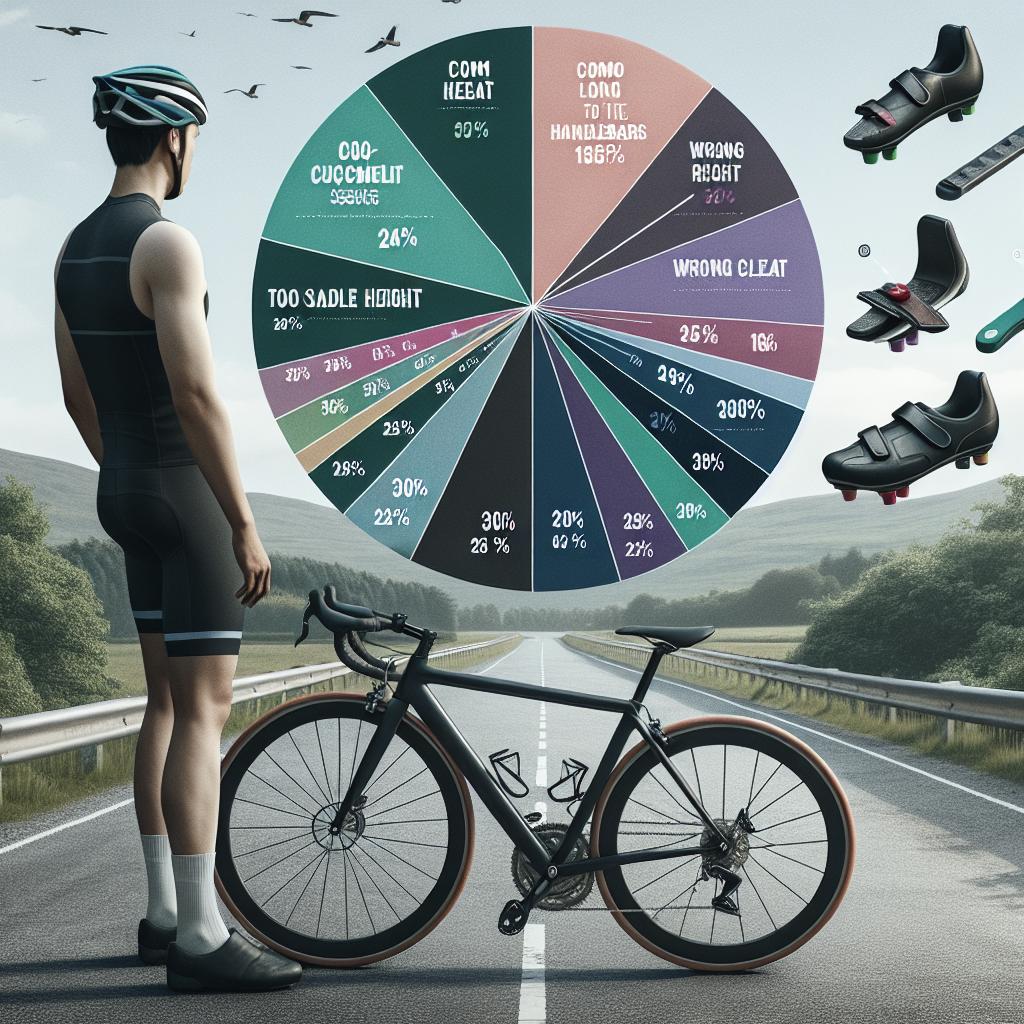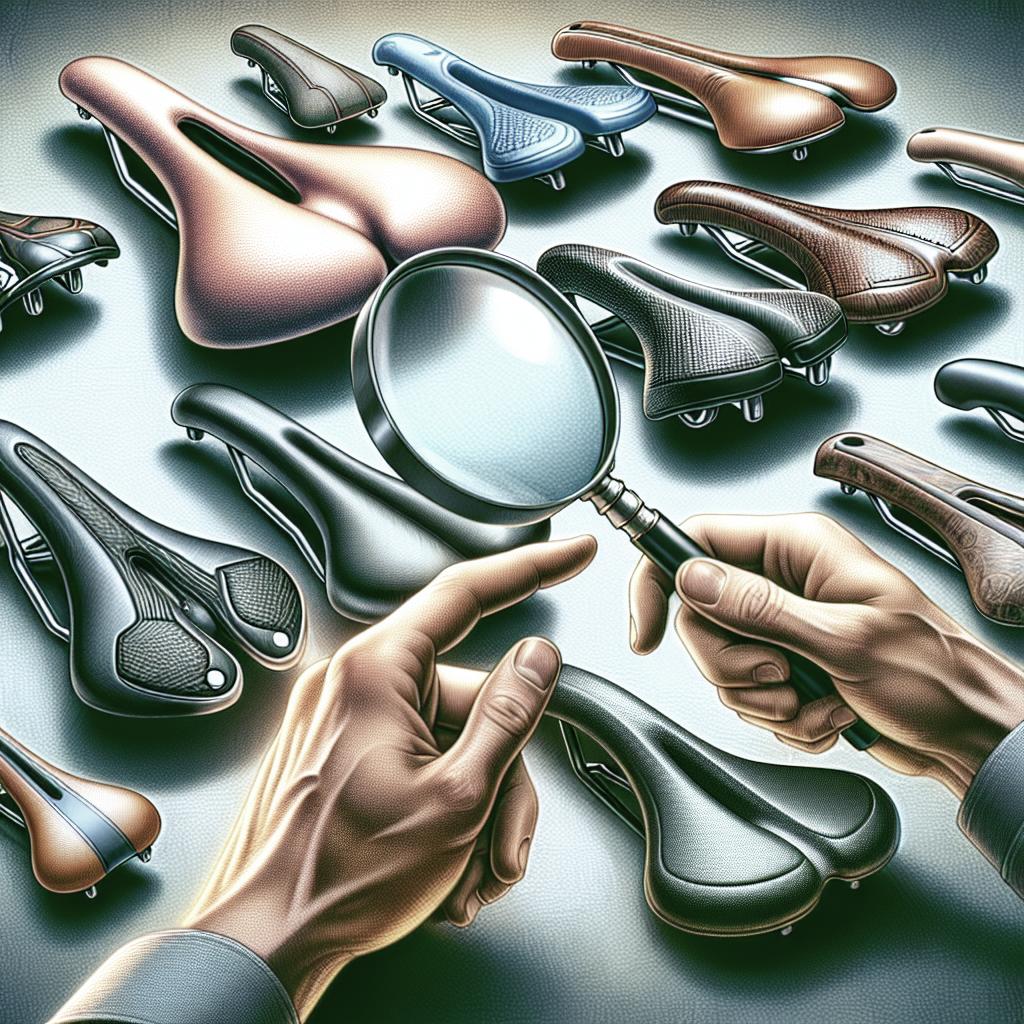“`html
Common Bike Fit Issues
Finding the perfect bike fit is crucial for both comfort and performance, whether you’re a recreational cyclist or a competitive racer. Many factors can influence the fit of your bike, including the frame size, saddle height, and cleat position, among others. In this article, we’ll explore common bike fit issues that cyclists often encounter and how these problems might affect your riding experience. We’ll delve into specific aspects such as incorrect frame sizes, improper saddle heights, and inadequate saddle support. Furthermore, we’ll address additional factors like handlebar width, shoe sizing, and frame type. By understanding these common pitfalls, you can take proactive steps to optimize your bike fit, reduce discomfort, and boost your cycling efficiency.
1. Wrong frame size
Choosing the correct frame size is foundational for a comfortable and efficient cycling experience. An appropriately sized frame ensures that the rider’s weight is distributed evenly across the bike, providing better control and stability. Many cyclists unknowingly ride frames that are too large or too small, leading to discomfort and potential long-term injuries. An oversized frame can make it difficult to handle the bike, leading to overextension when reaching for the handlebars, while a frame that’s too small may cause cramped riding positions.
To determine the right frame size, begin by measuring your inseam and comparing it to the bike’s stand-over height. This initial check can help filter potential bike sizes. Additionally, consider the frame geometry, which can vary significantly between manufacturers, affecting how a bicycle fits a particular rider. Visiting a reputable bike shop for a professional fitting can also provide valuable insight into selecting the correct frame size.
2. Wrong saddle height
Getting the wrong saddle height is one of the most common bike fit issues, often resulting in discomfort and inefficiency. An improperly set saddle height can affect your pedaling power, leading to knee pain and fatigue. If the saddle is too high, you’ll overextend your legs, potentially causing knee strain, while a saddle that’s too low can cramp your movement and limit your pedal stroke efficiency.
To adjust your saddle height correctly, start by wearing your cycling shoes and sitting on the bike. Position the pedals at the 6 o’clock position and ensure your heel can comfortably rest on the pedal with your knee slightly bent. This approach provides a preliminary height that you can fine-tune for optimal comfort and performance, ensuring a more enjoyable and sustainable riding experience.
3. Saddle doesn’t provide support
Having a saddle that offers insufficient support is another issue faced by cyclists. A saddle should support your sit bones and provide comfort for longer rides. Unfortunately, many bikers settle for the wrong type of saddle, leading to discomfort and compromised performance. A saddle that’s too narrow can increase pressure on delicate areas, while one that’s too wide may cause chafing and restricted leg movement.
1. Pushing the saddle forward to decrease reach
Pushing the saddle forward is a common adjustment made to decrease the reach to the handlebars. However, this can lead to a misalignment in your riding posture, shifting too much weight onto your hands and causing strain on your wrists and shoulders. This technique can be a quick fix, but it doesn’t address underlying frame size or geometry issues that originally contributed to the excessive reach.
Instead, check if your frame size is appropriate, and adjust the handlebars first. Ensuring that your saddle is correctly positioned over the pedals will help maintain a strong and comfortable riding posture.
2. Tilting the saddle down excessively to offset saddle discomfort
Tilting the saddle downward is another strategy cyclists use to offset discomfort. This adjustment can seem beneficial at first, as it might relieve pressure from sensitive areas. However, an excessively tilted saddle can cause your body to slide forward, demanding constant muscle engagement to stay in place, which leads to fatigue over time.
Proper saddle inclination should allow your sit bones to comfortably rest without sliding forward. A slight downward tilt, if any, is usually sufficient. Consider investing time to find a saddle that’s specifically designed for your riding style and body anatomy, allowing for effective support without requiring excessive tilt adjustments.
3. Handlebars too wide
Handlebar width greatly influences control and comfort, and wrongly sized handlebars can easily compromise your stance on the bike. Wide handlebars provide greater leverage and stability, excellent for aggressive off-road bikes, but when used inappropriately, they may force your arms into unnatural positions.
A narrower bar can improve aerodynamics and control on the road, but here too, too narrow can cause cramping and fatigue. Ensure that your handlebars are about shoulder-width apart to allow a natural and relaxed arm positioning, tailored to the style of riding predominantly undertaken.
4. Cleats too far forward
The placement of cleats on cycling shoes can significantly affect pedaling efficiency and comfort. Cleats that are too far forward can cause excessive pressure on the balls of your feet, contributing to numbness or discomfort during rides.
Ideally, your cleats should be positioned so that the balls of your feet are directly over the pedal axles. This setup allows for effective power transfer from your legs to the pedals, minimizing unnecessary stress on foot structures.
5. Decreasing cleat float to stabilize the foot
Cleat float refers to the lateral movement permitted by the cleat-pedal interface. While newer cyclists might seek additional stability by reducing this float, it can strain the knees, especially if the alignment isn’t perfect.
Retaining some degree of float allows natural foot movement during pedal strokes, accommodating your body’s biomechanical needs. If you find the float excessive, consider refining the cleat-pedal system rather than entirely eliminating the float.
6. Sizing up shoes because they are not wide enough
Choosing the right cycling shoe size is as important as cleat adjustment. Many cyclists reluctantly size up their shoes to accommodate width, leaving their feet swimming inefficiently in lengthy shoes.
Cycling shoes with wider options are available and a preferable solution. A properly fitting shoe keeps your foot stable, improves energy transfer, and avoids unnecessary pressure points that bulky alternatives might entail.
7. The wrong type of frame
Beyond just size, the type of frame matters significantly in how a bike fits and performs. Each frame is designed with specific riding styles and terrains in mind. A racing frame, for example, emphasizes aerodynamics and weight, but may not provide the comfort or durability for daily commuting.
Understanding your biking needs is critical. If versatility and comfort are priorities over speed and efficiency, consider other styles like endurance or hybrid frames. Addressing frame type can be the difference between an enjoyable ride and one filled with compromises on comfort and function.
Get The Leadout Newsletter
Stay informed on the latest trends and tips in cycling. Subscribe to The Leadout Newsletter to receive expert advice, insights, and information on gear advancements directly to your inbox. Our newsletter is packed with features geared to make your cycling experience smoother, safer, and more enjoyable.
Summary of main points
| Issue | Implication | Solution |
|---|---|---|
| Wrong frame size | Discomfort and control issues | Measure correctly, try different geometries |
| Wrong saddle height | Knee pain and inefficient pedaling | Adjust for a slightly bent knee |
| Saddle doesn’t provide support | Discomfort and performance compromise | Choose saddle fitting your body anatomy |
| Handlebars too wide | Arm strain and discomfort | Match handlebars to shoulder width |
| Cleats too far forward | Foot pain and numbness | Position cleats over pedal axles |
| Decreasing cleat float | Knee strain | Allow natural foot movement |
| Sizing up shoes | Improper foot fit | Choose wider shoes if needed |
| Wrong type of frame | Unsuited cycling experience | Select based on riding needs |
“`


